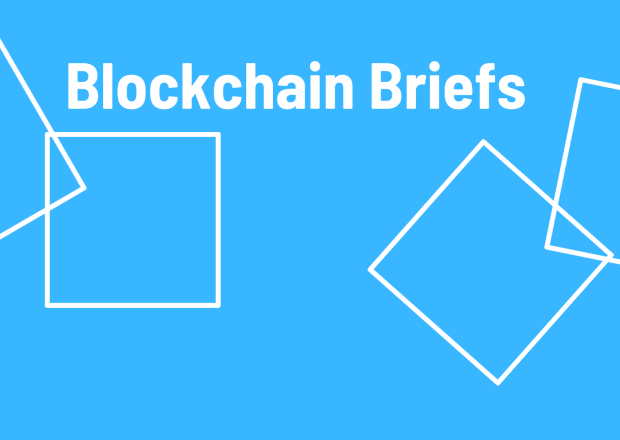Blockchain: The World's Least Private Diary
The rise of blockchain technology, renowned for its transparency and immutability, has ignited a fresh discourse on privacy within the financial sector. This article provides an in-depth exploration of privacy on the blockchain, the pros and cons of public transactions, and the future of privacy-centric protocols.

Made in Canva
Introduction
In the era of digitization, privacy has emerged as a critical concern for both individuals and institutions. With the advent of the ad-supported model of the internet, the majority of Americans feel that they have little control over data collected about them by companies and the government.
The rise of blockchain technology, renowned for its transparency and immutability, has ignited a fresh discourse on privacy within the financial sector. This article provides an in-depth exploration of privacy on the blockchain, the pros and cons of public transactions, and the future of privacy-centric protocols.
The Transparent Nature of Blockchain Transactions
At its core, blockchain technology is a public ledger of transactions. Each transaction is visible to every network participant, offering a high degree of transparency. This transparency is a key attribute which renders blockchain a reliable and secure technology. It facilitates transaction verification, thwarts double-spending, and curbs fraud. That said, this transparency also implies that every recorded transaction is available for public scrutiny.
Consider a public library where every borrowed book is logged in a ledger accessible to all library members. This ledger ensures that no one book is borrowed by two patrons simultaneously and prevents theft. It also means, however, that anyone can see which books you have borrowed, potentially revealing your reading habits and interests.
The Legitimate Reasons for Privacy in Blockchain Transactions
The transparency of blockchain transactions is often touted as a benefit, but in the case of traditional banking or medical records, there are legitimate reasons why a user might want to keep their transactions private.
Business Confidentiality: Businesses operating on the blockchain might not want their competitors to have access to their transaction data, which could reveal sensitive business strategies.
The Right to Privacy: Individuals might not want their personal financial transactions or health information to be publicly accessible due to privacy concerns. With the immutable nature of the blockchain preventing “right to be forgotten” requests from being filed, the ability to obfuscate transactions and holdings becomes a critical tool for users who wish to maintain privacy.
Financial or Personal Safety: Individuals might not wish to disclose their holdings so as to not become targeted for an attack either online or in the real world. In regions where political instability or crime rates are high, the ability to trace a person's financial transactions could even make them a target of bodily violence.
Benefits and Drawbacks of Public Transactions
The public nature of blockchain transactions carries both benefits and drawbacks.
Benefits
Transparency and Trust: The transparency of the blockchain makes it difficult for fraudulent activities to go unnoticed, as every transaction is visible to all network participants. It's akin to having a security camera’s live stream displayed in a store to deter shoplifters.
Accountability: Blockchain creates an irreversible audit trail, allowing easy tracing of changes on the network. The ability for banks to alter or delete transaction records is like a paper ledger that can be modified or torn, which can potentially be exploited for fraudulent purposes.
Decentralization: Transactions are decentralized, like a peer-to-peer marketplace where everyone can trade directly with each other without a central authority. This can prevent issues such as censorship and single points of failure.
Drawbacks
Privacy Concerns: As discussed above, the public nature of blockchain transactions can lead to privacy concerns, as sensitive information like financials or health records are exposed to the public.
Potential for Misuse: While blockchain transparency can deter illicit activities, it can also be misused. For instance, individuals or organizations with malicious intent could potentially use public information to track and target individuals or businesses. In one prominent case from January 2023, Kevin Rose, a prominent web2 founder active in the crypto space, had his wallet address doxed and was targeted in an attack resulting in over $1M worth of his NFTs being stolen.
The Downside and Risks of Privacy-Focused Cryptocurrencies
While cryptocurrencies are mostly used for legitimate purposes, they could also be exploited for criminal or illicit activities, and privacy increases the appeal of criminal use.
Money Laundering: Privacy-focused cryptocurrencies can be exploited for money laundering. The inherent privacy features can make it difficult for authorities to trace the source and destination of transactions, making these cryptocurrencies attractive for money laundering activities.
Trade in Illicit Goods and Services: Privacy-focused cryptocurrencies like Monero have become a currency of choice for darknet markets. These markets offer an array of illicit goods including hard drugs, malware, and stolen accounts.
Financing of Hostile Foreign Actors: The anonymity provided by privacy-focused cryptocurrencies can be exploited for financing hostile foreign actors. North Korea, for instance, is estimated to have stolen over $3B worth in crypto over the last 5 years.
Illicit Activity on the Blockchain: A Misconception of Scale
Contrary to popular belief, illicit activity on the blockchain is not as prevalent as it might seem. It is true that cryptocurrencies have been used for illegal activities, but this only accounts for less than 1% of overall transaction volume. While 2022 saw a record-setting $20.6 billion in illicit transactions, it is on the decline. The first half of 2023 saw a 65% reduction in crime when compared to the same period in 2022. The scale of these activities is dwarfed by those conducted in fiat currencies, with the amount of money laundered in a year estimated to account for 2-5% of global GDP or $800 billion to $2 trillion USD. Finally, it’s important to note that the transparency of the blockchain often aids in the recovery of stolen funds and the apprehension of criminals.
Privacy Enabled by Zero-Knowledge Proofs
One of the technological advancements that has been instrumental in enhancing privacy in blockchain transactions is the concept of zero-knowledge proofs. In the context of blockchain technology, zero-knowledge proofs allow one party to prove to another that they know a specific piece of information without revealing the information itself.
Consider the following examples:
On-chain
Alice wants to prove to Bob that she owns a certain amount of cryptocurrency without revealing the exact amount. Using a zero-knowledge proof, Alice can create a proof that confirms she owns at least a certain amount of the cryptocurrency, without revealing the exact amount. This allows Alice to prove her ownership while keeping the details of her holdings private.
Hybrid
Alice is purchasing alcohol, and the clerk has been conducting unwanted advances. To purchase her alcohol, she must show her ID with her first name, last name, and home address revealing unnecessary information that can potentially put her at risk. The only information the clerk needs to know is whether Alice is who she says she is, and whether Alice is 21 or older. With crypto-based identity solutions and zero-knowledge proofs, both values can be validated by a trusted third party without revealing her full name or address.
The Current Landscape of Crypto-Based Privacy Protocols
The desire for privacy in blockchain transactions has led to the development of various crypto-based privacy protocols. These protocols aim to enhance privacy by obscuring the details of blockchain transactions while still maintaining the integrity and security of the blockchain.
Layer-1 Privacy-Focused Blockchains
One category of these protocols includes dedicated Layer 1 privacy-focused blockchains. These blockchains are designed from the ground up with privacy in mind. Examples of such blockchains include Monero and Zcash, which use cryptographic techniques to obscure the details of transactions.
Layer 2 and Ethereum Compatible Privacy Solutions
Layer 2 solutions are essentially secondary frameworks or networks lying atop an existing blockchain, enhancing its scalability and efficiency. They are akin to building an express highway above a congested road, allowing for faster and smoother traffic flow. Layer 2 solutions for Ethereum, such as Optimism and zkSync, have been gaining traction due to their ability to handle a higher volume of transactions, thereby reducing congestion and lowering transaction fees on the Ethereum network. For more on understanding Layer 1 and Layer 2, check out our previous article in the series Understanding Ethereum's Layer 1 and Layer 2: Differences, Adoption, and Drawbacks.
Privacy-focused Layer 2 solutions are still in their nascent stages. However, projects like Aztec, a privacy network built on Ethereum, are pioneering Layer 2 privacy solutions. Aztec utilizes zero-knowledge proofs to enable private transactions and confidential digital assets on Ethereum.
Ethereum-compatible privacy solutions, on the other hand, are protocols that can be integrated with existing Ethereum-based applications. These solutions are like installing tinted windows in a car, providing privacy without changing the vehicle's fundamental structure.
Tornado Cash is a prime example of an Ethereum-compatible privacy solution. That said, Tornado Cash has been added to OFAC’s Specially Designated Nationals sanctions list, with the government’s targeting the publication of code, still under scrutiny as a violation of first amendment rights.
Compare and Contrast: Dedicated Layer 1 vs Layer 2 and Ethereum Compatible Solutions
When comparing dedicated Layer 1 privacy-focused blockchains with Layer 2 and Ethereum-compatible privacy solutions, several key differences emerge.
Dedicated Layer 1 privacy blockchains are like private islands, built from the ground up with privacy as their core feature.
They offer robust privacy protections, with every transaction designed to be private by default. However, their privacy features are often at odds with regulatory bodies, leading to potential issues with accessibility and adoption.
Layer 2 and Ethereum-compatible privacy solutions, in contrast, are more like private rooms in a large mansion (Ethereum).
They offer privacy features within the broader Ethereum ecosystem, allowing users to conduct private transactions while still benefiting from Ethereum's extensive network and vibrant ecosystem. That said, these solutions often require additional steps or transactions to achieve privacy, potentially leading to increased complexity and costs.
Key Takeaways for US Policymakers
As the blockchain and crypto space continue to evolve, it's crucial for US policymakers to strike a balance between consumer protection, lawful activity, and the fostering of innovation. Here are some key takeaways:
Recognize the Legitimate Need for Privacy: While transparency is a key feature of blockchain technology, it's important to recognize that there are legitimate reasons for privacy in blockchain transactions. Policies should respect the right to privacy and provide avenues for lawful, private blockchain transactions.
Understand the Technology: Concepts like zero-knowledge proofs are complex but understanding them is crucial for effective policymaking. There is an opportunity to leverage zero-knowledge proofs to balance the need for verification without sacrificing privacy. Policymakers should strive to understand these technologies and consult with experts in the field on ways to bolster development and integrate the technology into existing verification frameworks.
Consider the Scale of Illicit Activity: According to a report by Chainalysis, the scale of illicit activities conducted with cryptocurrencies is relatively small compared to those conducted with fiat currencies. This is not to say that efforts should not be made to limit illicit activity, but scale should be considered when dedicating time and resources in a manner that will hopefully result in the most positive impacts. This perspective is crucial for informed policymaking broadly in the crypto space, specifically regarding on-chain privacy.
In conclusion, privacy on the blockchain is a complex issue that presents both challenges and opportunities. By understanding the technology and promoting responsible innovation, policymakers can help shape a future where potential risks are addressed while the benefits of blockchain technology are fully realized.












